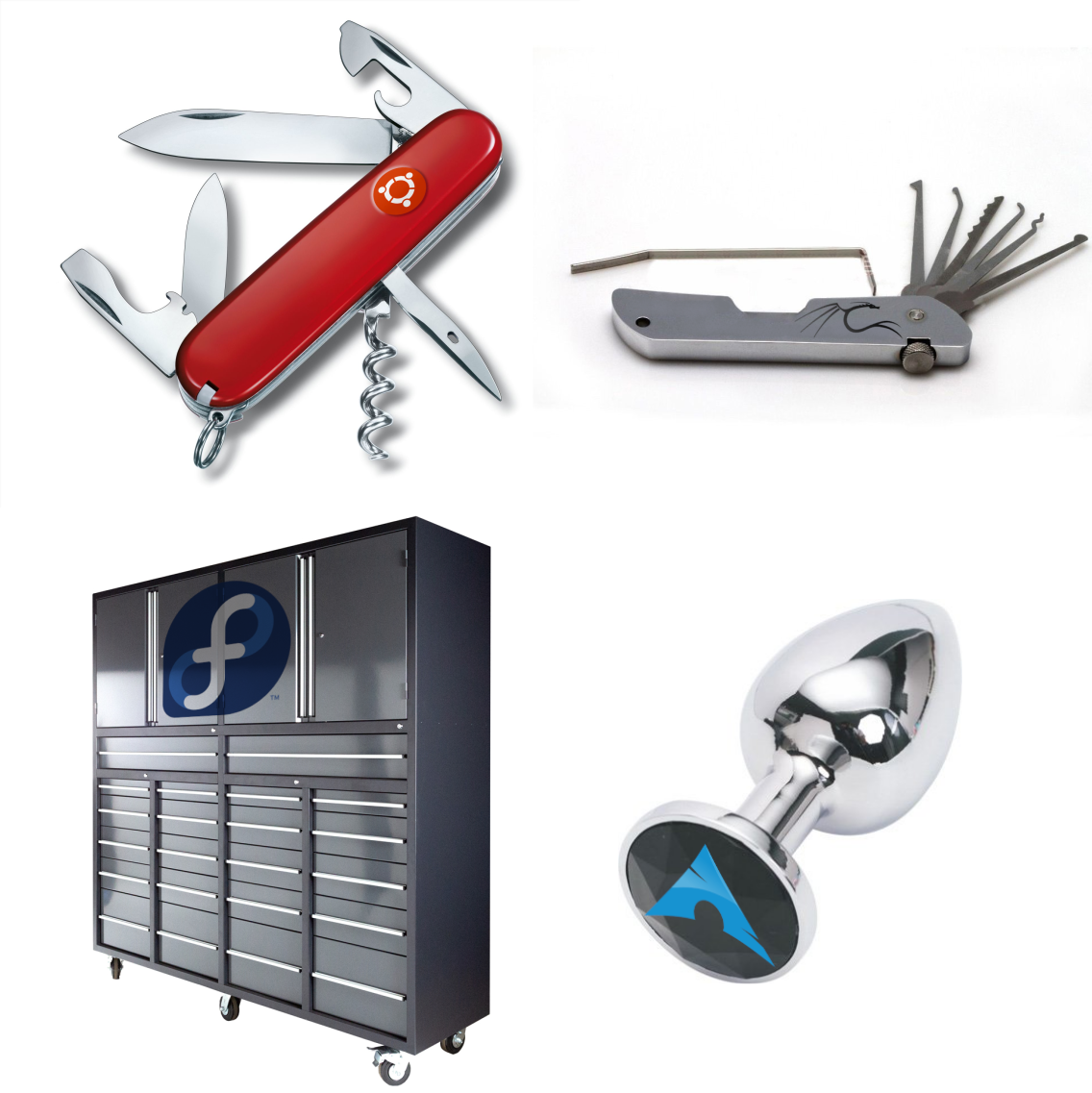this post was submitted on 14 Nov 2023
842 points (89.6% liked)
linuxmemes
21225 readers
111 users here now
Hint: :q!
Sister communities:
- LemmyMemes: Memes
- LemmyShitpost: Anything and everything goes.
- RISA: Star Trek memes and shitposts
Community rules (click to expand)
1. Follow the site-wide rules
- Instance-wide TOS: https://legal.lemmy.world/tos/
- Lemmy code of conduct: https://join-lemmy.org/docs/code_of_conduct.html
2. Be civil
- Understand the difference between a joke and an insult.
- Do not harrass or attack members of the community for any reason.
- Leave remarks of "peasantry" to the PCMR community. If you dislike an OS/service/application, attack the thing you dislike, not the individuals who use it. Some people may not have a choice.
- Bigotry will not be tolerated.
- These rules are somewhat loosened when the subject is a public figure. Still, do not attack their person or incite harrassment.
3. Post Linux-related content
- Including Unix and BSD.
- Non-Linux content is acceptable as long as it makes a reference to Linux. For example, the poorly made mockery of
sudoin Windows. - No porn. Even if you watch it on a Linux machine.
4. No recent reposts
- Everybody uses Arch btw, can't quit Vim, and wants to interject for a moment. You can stop now.
Please report posts and comments that break these rules!
founded 1 year ago
MODERATORS
you are viewing a single comment's thread
view the rest of the comments
view the rest of the comments

You often (if not most of the time) need some infrastructure in OCI containers (while we're at it, let's get rid of the misnomer Docker image). And that's going to be some subset of a distribution hand-crafted for that purpose. Most of the time, that should be Alpine, because they provide the slimmest base image.
Distroless containers (e.g. https://github.com/GoogleContainerTools/distroless, Chiselled Ubuntu, etc) are often smaller than Alpine ones. Google's smallest Debian-based one is around 2MB.
I have a Dockerized C# app... I'm going to try .NET Native AOT (which was improved a lot in .NET 8, released today) to compile it into a self-contained binary, and see how well it works with a distroless base container.
I'm curious to hear how that works out. I'm a big fan of C#; not so much the Microsoft ecosystem. I'd say for maximum scalability you'd want languages which compile to small binaries. So, Go, Rust, C++, C, and theoretically some others. The approach with Java and C# to bundle the framework, JIT, etc, and then try to shave off as much as you can get away with feels kind of backwards. And I get the excitement of the Java folks when they manage to create a self-contained binary with GraalVM and co of 12mb. Like, that's impressive, but had you developed the same thing with Go it would be .5mb. Curious to see how .NET fares in that comparison to Java.
In the dotnet 8 announcement the brag is that a minimal web service will be 8.5 megs
https://learn.microsoft.com/en-us/aspnet/core/release-notes/aspnetcore-8.0?view=aspnetcore-8.0#native-aot